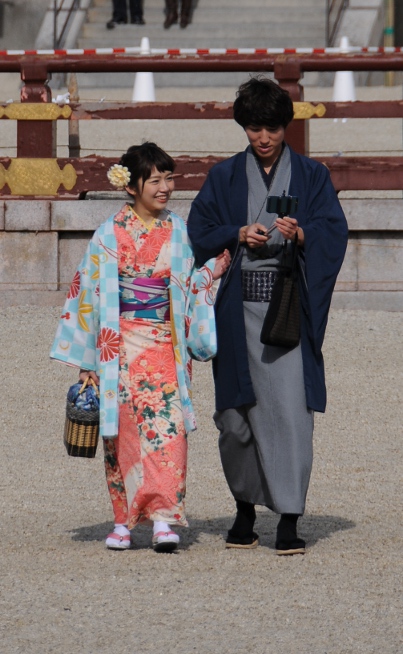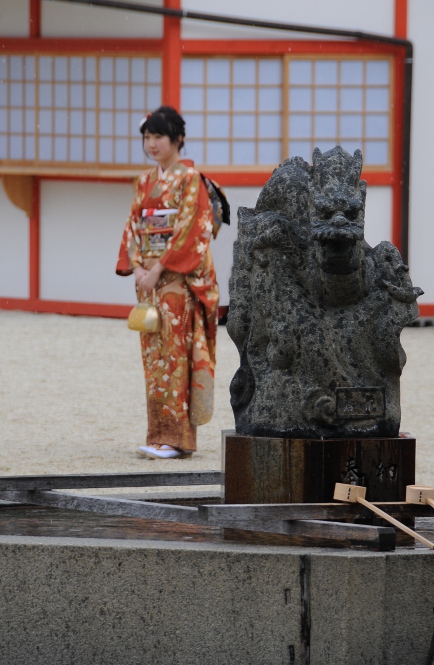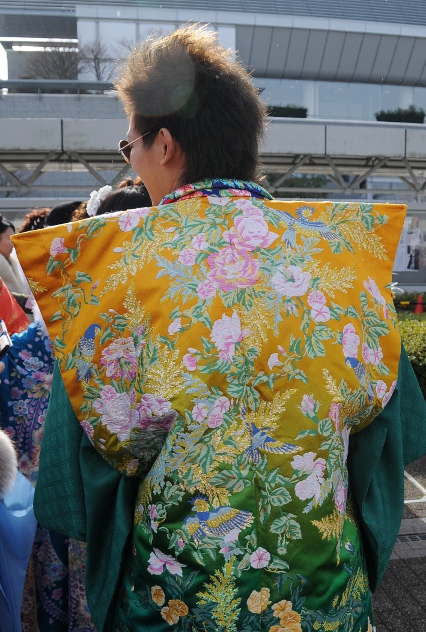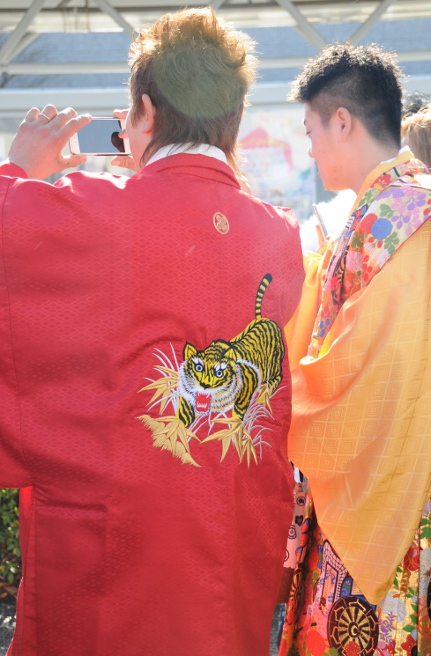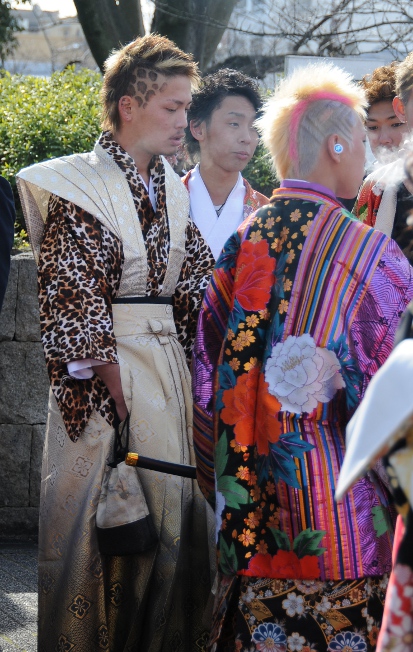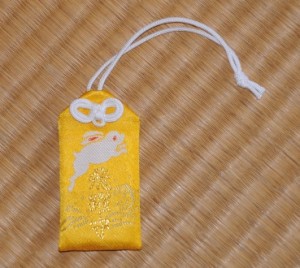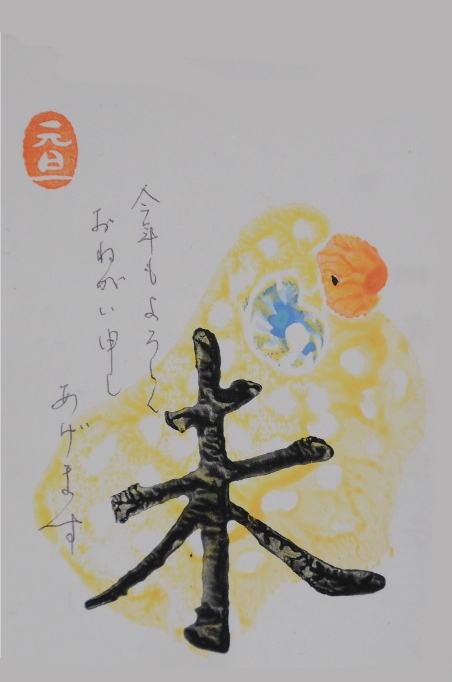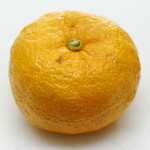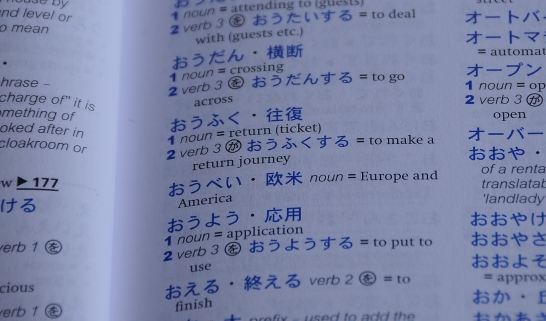I almost missed it! Yesterday was the last day of the 43rd “Nitten” exhibition here in Kyoto. It is the largest open-entry exhibition of Japanese artists, and it shows exhibits from calligraphy to applied arts to paintings, which are divided into Japanese and Western style paintings. The Nitten claims to be “the largest artist’s organisation with the most glorious history in japan, since 1907”, which I find gloriously funny…
Anyway, I realised around noon yesterday, that it was the last day of the exhibition, and despite my plans for a lazy afternoon at home in bed with books, chocolate, and chips, I made my way to the museum. Once again I was lucky and didn’t pay for it: Just when I wanted to buy a ticket, another visitor walked up to me and handed me one for free. I thanked her profusely and then went to enjoy the exhibition.
Just like last year, I passed on the calligraphy. A friend once suggested to view it simply as art, but I’m not very much into abstract stuff. I think the meaning behind the characters is an important part of the value of these pieces.
I enjoyed the sculptures, they were much less static than last year. Again, the (nude) female body dominated, and there are only so many poses a human body can achieve – yes, most of the sculptures were done after nature. My favourite was a simple piece showing a young woman sitting and reading a book; but part of the attraction may have been the title of “my time”. Yes, I can certainly relate to spending “my time” with a book…
Except for one o r two snowy scenes in the high mountains the paintings were less to my taste this year. There was a single one, depicting two eagles (in a non-kitsch, matter-of-fact kind of way), that captivated me. Afterwards, I tried to find a postcard of it in the shop, but this particular one they did not have, unfortunately.
r two snowy scenes in the high mountains the paintings were less to my taste this year. There was a single one, depicting two eagles (in a non-kitsch, matter-of-fact kind of way), that captivated me. Afterwards, I tried to find a postcard of it in the shop, but this particular one they did not have, unfortunately.
They did sell a photo of my favourite piece this year, though: The little, robot-like metal statue you see at the left of this post. It was maybe 50 cm high and had the title “flexible”. Although it had the same posture as in the photograph here, I still think that the parts can move. I took a very close look at the fingers, and they certainly seemed to be flexible. My own fingers itched terribly; I really wanted to try and see, but touching the exhibits was probably not allowed, and I was not finished seeing the whole exhibition yet…
All in all, I did not like this exhibition as much as last year’s. There were less outstanding pieces, less art that I could imagine owning; and although I think that the sculptures have improved, I found the paintings – which form the largest part of the exhibition – rather mediocre. I am looking forward to see the next Nitten, though.

